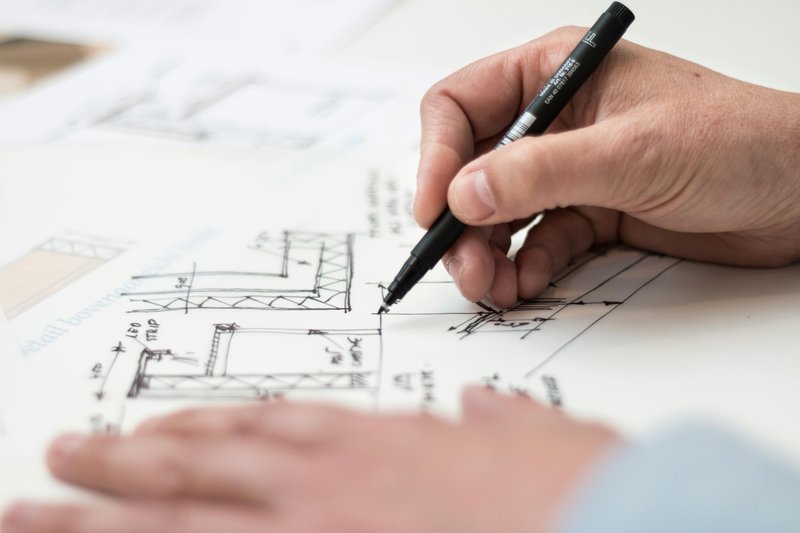
How to Attract Top Marketing Talent For Your Business
Hiring exceptional marketers is more difficult than ever. This guide shows CEOs and HR leaders exactly how to attract the right talent while strengthening your brand’s marketing engine.
11 Nov 2025
A strong design brief is the secret to getting the results you actually want. By setting clear goals, sharing inspiration, and communicating effectively, you’ll save time, money, and frustration.
Blog
Miscommunication is one of the most common reasons design projects derail. The truth is, designers need a clear, well-structured brief to deliver work that truly matches your vision. A professional design brief acts as your roadmap, setting expectations upfront, preventing costly misunderstandings, and ensuring your project gets completed smoothly.
Whether you’re working with a freelance designer, a creative agency, or even an in-house team, knowing how to brief a designer properly will save you stress and ensure you actually get what you want. Let’s dive into how to nail the process step by step.
Before we jump into the “how”, let’s look at the “why”. A strong brief provides direction. It ensures your designer understands not just what you want visually, but why you want it.
Without a detailed brief:
On the other hand, a great brief means:
Design doesn’t exist in a vacuum. Your designer needs to understand your business, your brand, and your goals.
Ask yourself:
For example, if you’re designing a brochure, is your goal to generate enquiries, educate your customers, or make your brand look professional? Each of these goals leads to different design decisions.
Providing this “big picture” context helps your designer make strategic choices rather than just aesthetic ones.
Your designer needs to know who they are designing for, not just what you like personally. A common mistake is briefing a designer based on your own preferences rather than your audience’s needs.
For instance, a brochure aimed at corporate decision-makers will look very different from a flyer for university students. The tone, colour palette, typography, and imagery all need to reflect the audience.
Include details such as:
The clearer you are about your target audience, the more your designer can tailor the final product to resonate with them.

Every piece of design work should be consistent with your brand identity. This means your designer will need access to your:
If you don’t already have brand guidelines, this is a great opportunity to create them. Hiring a marketing consultant can help you establish a strong foundation that makes briefing designers much easier in the future.
One of the easiest ways for design projects to go off track is being vague about deliverables. Be clear about exactly what you need.
For example:
Being precise avoids misunderstandings and ensures your designer allocates the right amount of time to the project.

Words can sometimes fall short. If you’ve ever tried to explain a design style without visuals, you know how easy it is for things to get lost in translation.
This is where visual inspiration helps. Provide your designer with:
Even pointing out what you don’t like is valuable. It narrows the scope and gives your designer clear boundaries.
It might feel uncomfortable, but being upfront about budget and timelines avoids headaches later. Designers work with different pricing structures, and your budget determines the level of polish, complexity, and revisions possible.
If you’re unsure about costs, Cemoh’s marketing consultant rate guide can give you a sense of what to expect when working with different professionals.
On timelines, be realistic. Don’t expect high-quality work overnight. Share your deadlines and ask your designer to flag if they think they’re achievable. A good rule of thumb is to allow extra time for revisions.

Briefing should be the start of a collaborative process. Be clear on how you’d like to work with your designer:
When expectations are set upfront, projects run much more smoothly.
Even with a great brief, revisions are part of the process. The way you give feedback makes all the difference.
Good feedback is:
Avoid giving contradictory feedback (e.g., “make it more fun but also more serious”). If multiple stakeholders are involved, consolidate feedback before sending it to the designer.
Building a relationship with your designer pays off in the long run. Once they understand your brand and preferences, future projects will be faster and more effective.
If you don’t need a full-time designer, consider working with freelance marketers or a Fractional CMO who can manage creative projects strategically without the overhead of a permanent hire.
To wrap up the practical steps, let’s highlight some common pitfalls:
Avoid these, and you’ll be ahead of most people who brief designers.
A great design brief is the foundation of a successful creative partnership. By providing context, clarity, and collaboration, you empower your designer to do their best work while ensuring you actually get what you want.
So, the next time you need a brochure, a social media campaign, or a complete rebrand, remember: the better your brief, the better your results.
If you’re ready to bring your vision to life with professional creative support, it might be time to hire a graphic designer through Cemoh. With the right brief in hand, you’ll be amazed at how smooth the process can be.
Here are some suggested articles that are closely related to this post

Hiring exceptional marketers is more difficult than ever. This guide shows CEOs and HR leaders exactly how to attract the right talent while strengthening your brand’s marketing engine.

In an increasingly competitive marketing job market, talent alone is no longer enough. The real secret? Positioning yourself as the expert and building a brand that sells your value before you even speak.

A strong brand is more than a logo. It’s how people feel about your business. These ten proven strategies will help you boost brand awareness, build trust, and stand out in your market.

Hiring marketing leadership is not just about finding someone to run campaigns. A Fractional Chief Marketing Officer (CMO) may be the solution your company needs.

Marketing is not a guessing game. With the right tools and mindset, CEOs can confidently measure ROI and ensure every marketing dollar works harder than ever.

As demand for flexible marketing talent grows, standing out as a fractional expert means clearly defining your niche, showing measurable impact, and building a strong personal brand.